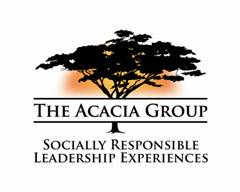Essential Steps to a Long Term CSR Strategy
Apr 7, 2010 1:19 PM ET
The Acacia Group - Socially Responsible Leadership
It is getting to be a challenge to keep up with the various news pieces relating to CSR that are breaking almost on a daily basis. As an example today alone, CSL, Australia’s largest pharma corp. releases its CSR report, The Body Shop just announced over $ 1 m to prevent sex trafficking, and Robert Polman the President of a little company called Unilever decries those corporations who are only after short term profits and focus too much on shareholders at the expense of customers. Such vigorous discussion is great news and suggests that CSR is getting a stronger foothold as a core element within the board room.
Despite this, there is still a healthy debate about the merits of CSR and the role of corporations in contributing to social and environmental issues. The cynicism is based in part on the notion that CSR is just PR and is shallow and only designed to increase shareholder value with minimal interface on the social and environmental issues that matter…With that in mind and with Robert Polman of Unilever acting as an example of effective contemporary leadership here are five tips for creating a CSR strategy with teeth. 1. Do something that is tied to your business – use your personal and corporate strengths and interests. This leverages the unique skill sets within your organization which creates buy-in from your employees and also assists branding the CSR initiative as something that may be unique to your organization. Witness the “Soft Hands Kind Heart” campaign from The Body Shop. This is different than just writing a check or a one off contribution of volunteer time that can be forgotten. 2. Make it part of the overarching corporate strategy – effective corporations find a way to have lateral thinking that cut across administrative silos. An effective CSR strategy is truly enterprise wide and involves the entire production and administrative value chain. 3. Engage your leaders in it – to paraphrase James Carville (and Fast Company) it’s about the people stupid! In order to get leaders to buy in to the need for social and environmental awareness and service impacts they must understand the value. Yes, this will be an economic and cognitive impact – but without the emotional understanding the effort will ring shallow. There must be a way forward that allows leaders to embrace the process and become champions of the agenda. 4. Create an internal and external scorecard – Be prepared to commit resources to measuring the impact of this – externally in terms of value to the NGO or community and also internally as to how those leaders you have engaged are actually performing and tying their socially responsibility objectives with their personal performance objectives and those of the corporation. 5. Revisit – Readjust- Reinvest – Since this is a long-term strategic focus that uses your best people (and then strengthens their commitment to stay longer) – you will want to keep this alive. Accordingly, you will need to reexamine your interests in this area and ensure that this aspect of the business grows and is kept fresh… These are bold and big steps….Are these the ones you would use? Are there other truisms that fit for CSR? This is the 1st in a series of blogs for this week that focus on the core business areas of The Acacia Group, CSR, leadership and learning, and community development.AG5919

